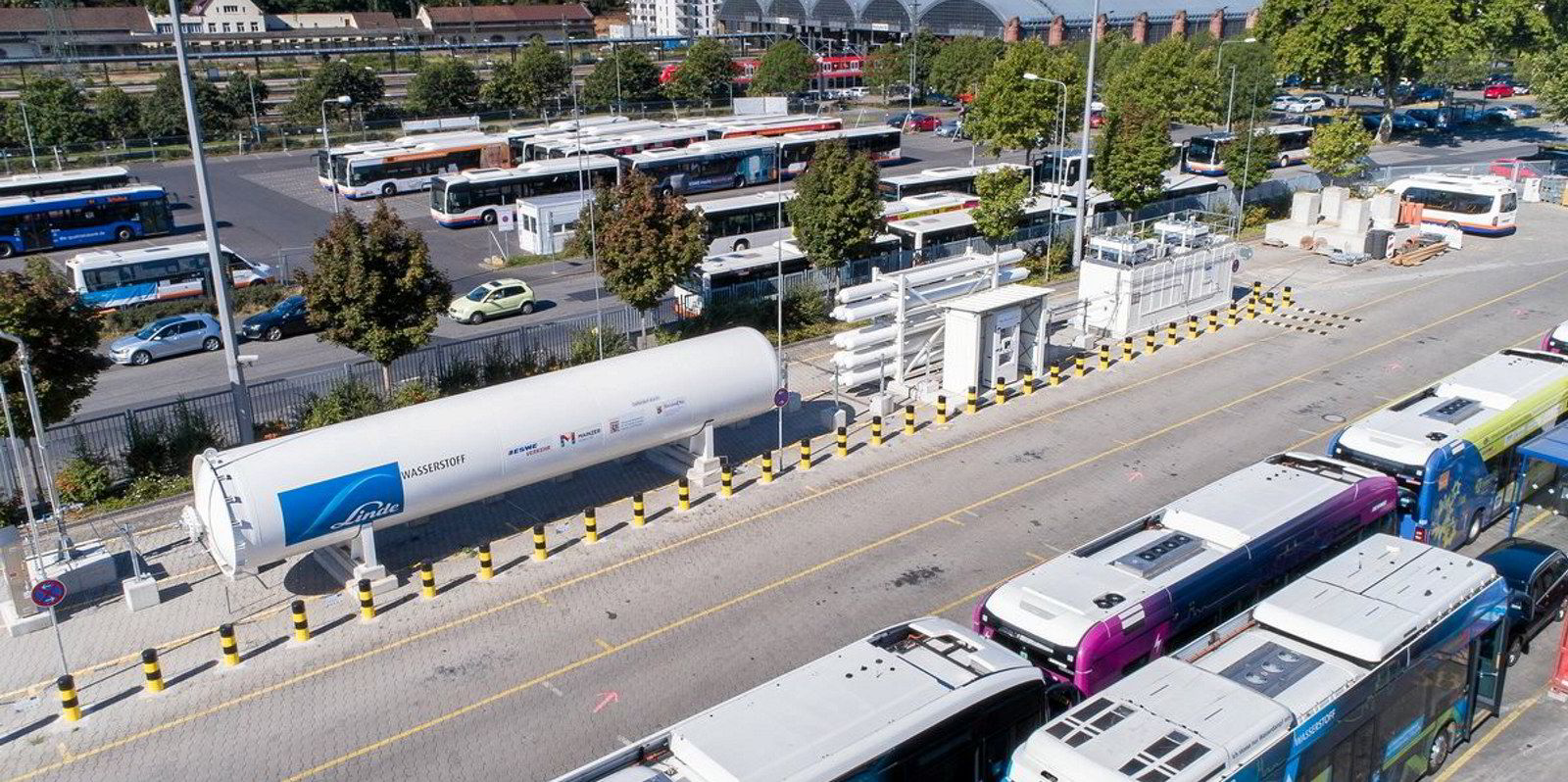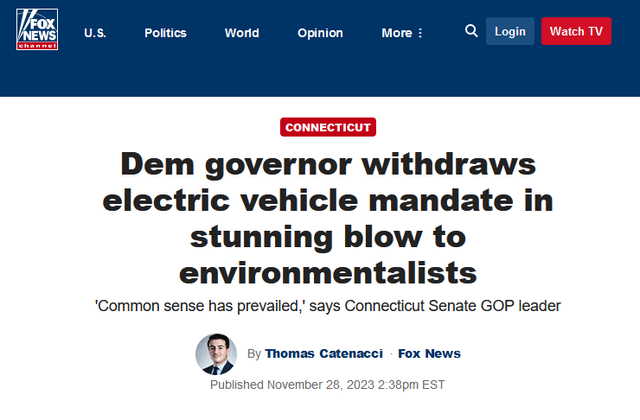Comparative Analysis Of Hydrogen And Battery Buses In European Transit Systems

Table of Contents
Technological Differences and Operational Performance
Battery Electric Buses
Battery-electric buses primarily utilize lithium-ion battery technology. Their operation relies on a robust charging infrastructure, typically involving fast-charging stations at terminals or slower depot charging overnight. Range is a key limitation, varying depending on battery capacity and operational conditions. Operational lifespan is significantly influenced by the number of charge cycles and environmental factors.
- Advantages: Lower initial cost compared to hydrogen buses, and the technology is well-established with readily available expertise and components.
- Disadvantages: Limited range compared to hydrogen buses, requiring a denser network of charging stations. Battery life and replacement costs represent a significant long-term expense. The environmental impact of battery production and disposal must also be considered.
Successful deployments of battery-electric buses can be observed in cities like Amsterdam, London, and Hamburg, showcasing their viability in urban environments with strategically placed charging infrastructure.
Hydrogen Fuel Cell Buses
Hydrogen fuel cell buses utilize hydrogen gas as fuel, which reacts within fuel cells to generate electricity. This process emits only water vapor, making them zero-emission vehicles. Refueling is considerably faster than charging batteries, but requires a dedicated hydrogen refueling infrastructure. Their range is typically superior to battery-electric buses, making them suitable for longer routes.
- Advantages: Longer range than battery-electric buses, enabling operation on longer routes. Faster refueling time reduces operational downtime.
- Disadvantages: Higher initial costs compared to battery-electric buses. The development of a widespread hydrogen refueling infrastructure presents a major challenge, particularly in terms of cost and safety. The method of hydrogen production significantly impacts the overall environmental footprint; reliance on fossil fuels negates the environmental benefits.
Cities like Cologne, Germany, and Aberdeen, Scotland, have successfully deployed hydrogen fuel cell buses, demonstrating their potential in varied geographical conditions.
Comparative Performance Metrics
| Feature | Battery Electric Bus | Hydrogen Fuel Cell Bus |
|---|---|---|
| Range | 150-300 km (dependent on battery size) | 300-500+ km |
| Refueling/Charging Time | 2-6 hours (depot charging), 15-30 min (fast charging) | 5-10 minutes |
| Operational Cost | Lower initial cost, higher long-term battery costs | Higher initial cost, lower long-term fuel costs (depending on hydrogen production) |
| Lifecycle Emissions | Dependent on electricity source; can be very low with renewable energy | Dependent on hydrogen production; can be very low with green hydrogen |
| Total Cost of Ownership (TCO) | Moderate to high, depending on battery lifespan and electricity costs | High initially, potentially lower long-term depending on hydrogen production and infrastructure costs |
The TCO analysis reveals that while battery-electric buses have a lower initial investment, long-term costs can increase due to battery replacements. Hydrogen buses have higher upfront investment, but potentially lower long-term running costs, contingent on the cost and sustainability of hydrogen production.
Infrastructure Requirements and Deployment Challenges
Battery Electric Bus Infrastructure
Widespread adoption of battery-electric buses necessitates a substantial investment in charging infrastructure. This includes building fast-charging stations along routes and depot charging facilities. Upgrading grid capacity to handle the increased electricity demand is also crucial, potentially leading to grid strain in certain areas.
- Costs: Significant investment is required in charging stations, grid upgrades, and land acquisition. Smart charging technologies can help to mitigate grid strain.
Hydrogen Bus Infrastructure
Deploying hydrogen buses requires the development of a comprehensive hydrogen infrastructure. This includes establishing hydrogen production facilities (ideally using renewable energy sources for green hydrogen), storage facilities, transportation networks, and refueling stations. Safety protocols for handling hydrogen are essential.
- Challenges: Creating a widespread hydrogen refueling network is a significant hurdle. The cost of hydrogen production, storage, and transportation impacts the overall economic viability.
Comparative Infrastructure Costs
The infrastructure costs for both technologies are substantial. Battery electric bus infrastructure requires widespread charging station deployment and potential grid upgrades, while hydrogen bus infrastructure demands a parallel development of a completely new hydrogen production and distribution network. A thorough cost-benefit analysis considering both short-term and long-term investments is vital for informed decision-making.
Environmental Impact and Sustainability
Life Cycle Assessment (LCA)
A comprehensive LCA comparing battery-electric and hydrogen fuel cell buses reveals that both technologies offer significant environmental benefits over diesel buses. However, the overall environmental impact is deeply intertwined with the source of electricity and method of hydrogen production.
- Battery Production: Mining and manufacturing of batteries have environmental consequences, including carbon emissions and waste generation.
- Hydrogen Production: Green hydrogen production via electrolysis powered by renewable energy sources is crucial for minimizing the environmental footprint. Fossil fuel-based hydrogen production negates the environmental benefits.
- Bus Operation: Battery-electric buses have lower operational emissions when powered by renewable energy. Hydrogen fuel cell buses have zero tailpipe emissions but rely on the sustainability of hydrogen production.
Sustainability Considerations
The sustainability of both technologies hinges on using renewable energy sources for electricity generation (for battery charging) and hydrogen production. Utilizing renewable energy sources such as solar, wind, and hydropower for both electricity and hydrogen production minimizes the overall carbon footprint. Investing in sustainable practices throughout the entire lifecycle, from material sourcing to end-of-life management, is essential.
Economic Viability and Policy Support
Cost-Benefit Analysis
A detailed cost-benefit analysis is crucial for evaluating the economic viability of each technology. Factors to consider include capital costs (bus purchase, infrastructure development), operational costs (fuel/electricity, maintenance), and potential subsidies or incentives.
Policy and Regulatory Frameworks
Government policies and financial incentives play a critical role in fostering the adoption of sustainable bus technologies. EU directives and national strategies promoting clean public transport can significantly influence the market uptake of both hydrogen and battery-electric buses. Subsidies, tax breaks, and preferential procurement policies can accelerate the transition to a greener public transportation network.
Conclusion
This comparative analysis reveals that both hydrogen and battery-electric buses offer viable pathways towards sustainable public transport in Europe. Battery-electric buses boast lower initial costs but face range limitations and challenges related to charging infrastructure. Hydrogen buses offer superior range and faster refueling but require significant investment in hydrogen production and refueling infrastructure. The environmental impact of both technologies is closely linked to the sustainability of electricity and hydrogen production. A holistic assessment considering infrastructure availability, environmental impact, and economic feasibility is essential for informed decision-making.
Further research and development in both technologies are crucial, alongside well-informed policy decisions that incentivize the deployment of sustainable hydrogen and battery buses. Strategic investment in both infrastructure and technology is imperative to meet Europe's climate goals and create a cleaner, more efficient, and sustainable public transportation network across the continent. The future of European transit relies on the smart integration of both hydrogen and battery buses.

Featured Posts
-
 Steelers Pickens Contract Talks Stall Potential Departure Before 2026
May 07, 2025
Steelers Pickens Contract Talks Stall Potential Departure Before 2026
May 07, 2025 -
 Posodobitev Papezevo Stanje Ostaja Stabilno Zdravniki Zadrzani
May 07, 2025
Posodobitev Papezevo Stanje Ostaja Stabilno Zdravniki Zadrzani
May 07, 2025 -
 Fatal San Carlos Street Race Results In Eight Year Prison Sentence
May 07, 2025
Fatal San Carlos Street Race Results In Eight Year Prison Sentence
May 07, 2025 -
 Xrp Price Soars Outperforming Bitcoin And Other Leading Cryptocurrencies Post Sec Filing
May 07, 2025
Xrp Price Soars Outperforming Bitcoin And Other Leading Cryptocurrencies Post Sec Filing
May 07, 2025 -
 Auto Dealers Intensify Fight Against Electric Vehicle Regulations
May 07, 2025
Auto Dealers Intensify Fight Against Electric Vehicle Regulations
May 07, 2025
